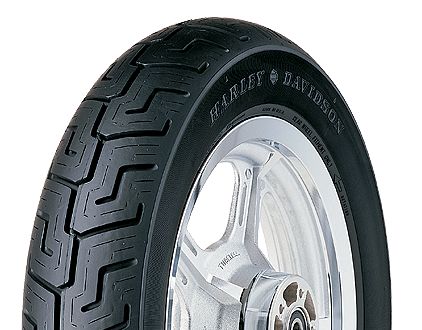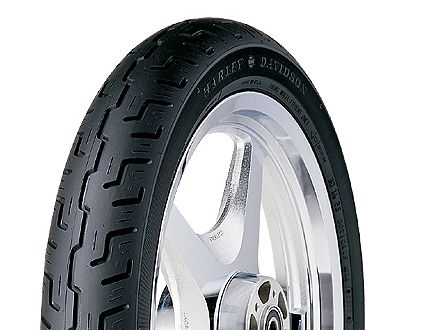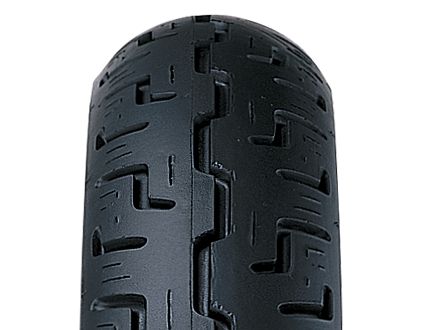Back to Total Motorcycle Dunlop Tire/Tyre Guide
Click photos to enlarge. 
Dunlop D401
– Dunlop D401
The D401 features an advanced tread pattern and specifically formulated compound to deliver outstanding grip in wet or dry weather, while delivering long tire life. It is the only tire approved by Harley-Davidson for its cruiser models.
Harley-Davidson Tire Series
The bond between Dunlop and Harley-Davidson has been growing stronger and stronger for decades. Since 1984, Dunlop has been the sole supplier of original equipment tires for Harley-Davidson, and this remarkable endorsement by Harley-Davidson has launched the unique Dunlop® Harley-Davidson® Tire Series, the ultimate vote of confidence in Dunlop quality.
FEATURES
- The D401 is the only tire approved by Harley-Davidson for its cruiser models.
- An advanced tread pattern and specifically formulated compound to deliver outstanding grip in wet or dry weather, while delivering long tire life.
- All D401 tires use bias or bias-belted construction and incorporate a computer-optimized tread profile to reduce cupping for even wear.
- The Dunlop® Harley-Davidson® Tire Series D401 is available in 150/80 B16 wide tire size for the 2002 – 2004 Dyna models.
- Available in 90/90-19 and 100/90-19 front, and 130/90B16 and 150/80B16 rear sizes.
Sizes
|
|||||||||||||||||||||||||||||||||||||||||||||||||||||||||||||||||||||||||||||||||
B = Belted Construction BW = Black Sidewall
Note: When new tires are fitted, they should not be subjected to sudden acceleration, hard cornering, maximum power or braking for at least 100 miles. Failure to do so may result in loss of control and serious injury. The 100 mile run-in is required to adjust to the feel of new tires versus the worn tires.


